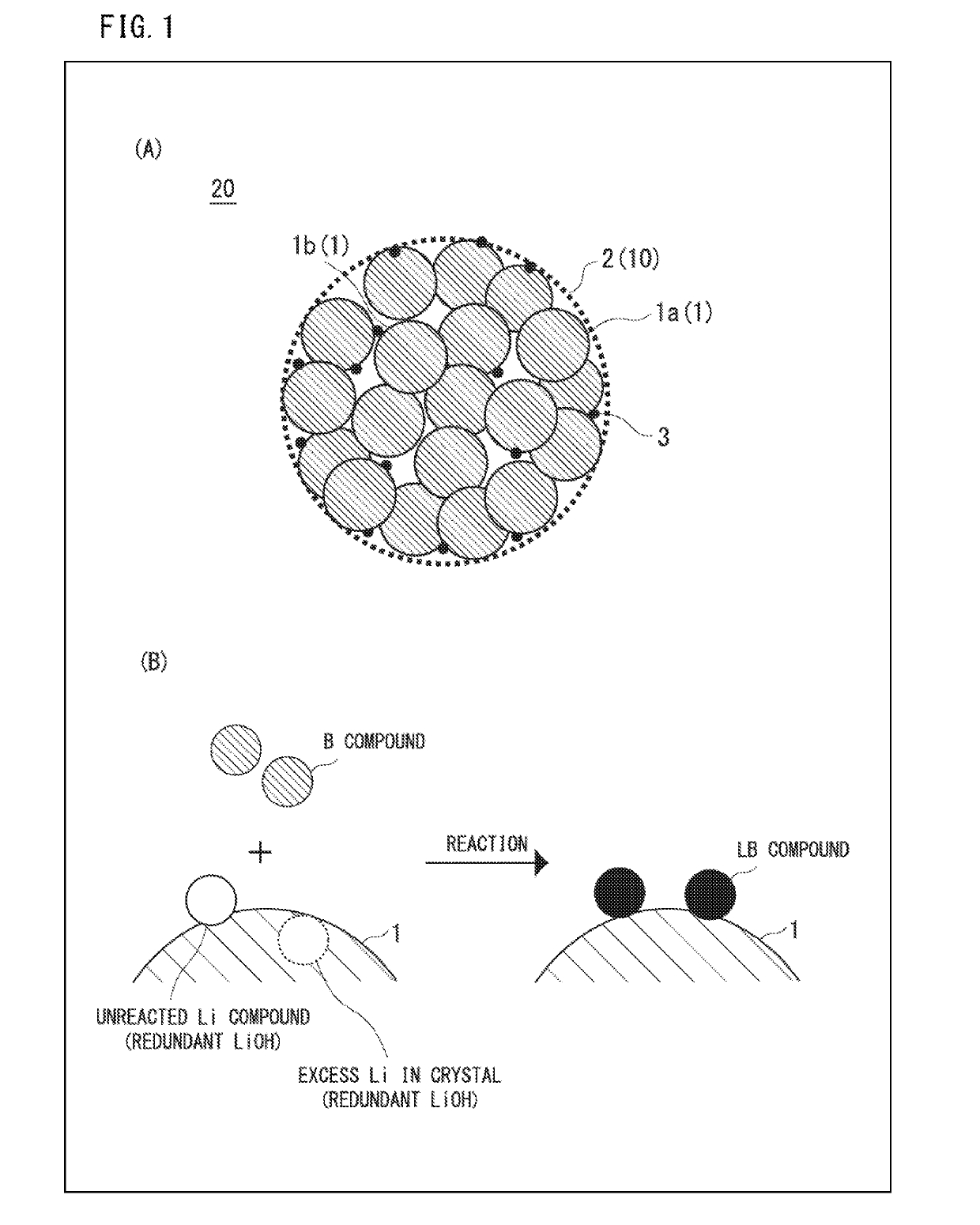Positive electrode active material for non-aqueous electrolyte secondary battery and method for manufacturing the same, positive electrode mixed material paste for non-aqueous electrolyte secondary battery, and non-aqueous electrolyte secondary battery
a technology of non-aqueous electrolyte and active material, which is applied in the direction of cell components, electrochemical generators, and nickel compounds, can solve the problems of deterioration in operability and yield, and achieve the effects of high stability, reduced gelation, and high industrial valu
- Summary
- Abstract
- Description
- Claims
- Application Information
AI Technical Summary
Benefits of technology
Problems solved by technology
Method used
Image
Examples
example 1
[0102]The fired powder of the lithium-metal composite oxide, which was obtained by a publicly known technology in which a mixture of hydroxide powder mainly composed of Ni with lithium hydroxide was fired, and which was represented by Li1.025Ni0.88Co0.09Al0.03O2 with the average particle diameter of 12.5 μm and the [(d90−d10) / average particle diameter] of 0.80, was used as a base material.
[0103]To the base material (fired powder) was added boric acid (manufactured by Hayashi Pure Chemical Ind., Ltd.) with the amount thereof being 3% by mole as the boron amount in the boric acid relative to the total of Ni, Co, and Al included in the fired powder of the lithium-metal composite oxide; after they were mixed, water was added to this mixture with the amount thereof being 10% by mass relative to the fired powder of the lithium-metal composite oxide; they were further mixed. Thereafter, under an evacuated atmosphere the resulting mixture was heated to 100° C. and dried for 12 hours; and th...
example 2
[0106]The positive electrode active material was obtained and evaluated in the same way as Example 1 except that 1.0% by mole of boric acid as the boron amount was added. Evaluation results are summarized in Table 1.
example 3
[0107]The positive electrode active material was obtained and evaluated in the same way as Example 1 except that 8.0% by mole of boric acid as the boron amount was added. Evaluation results are summarized in Table 1.
PUM
| Property | Measurement | Unit |
|---|---|---|
| aspect ratio | aaaaa | aaaaa |
| particle diameter | aaaaa | aaaaa |
| particle diameter | aaaaa | aaaaa |
Abstract
Description
Claims
Application Information
 Login to View More
Login to View More - R&D
- Intellectual Property
- Life Sciences
- Materials
- Tech Scout
- Unparalleled Data Quality
- Higher Quality Content
- 60% Fewer Hallucinations
Browse by: Latest US Patents, China's latest patents, Technical Efficacy Thesaurus, Application Domain, Technology Topic, Popular Technical Reports.
© 2025 PatSnap. All rights reserved.Legal|Privacy policy|Modern Slavery Act Transparency Statement|Sitemap|About US| Contact US: help@patsnap.com



